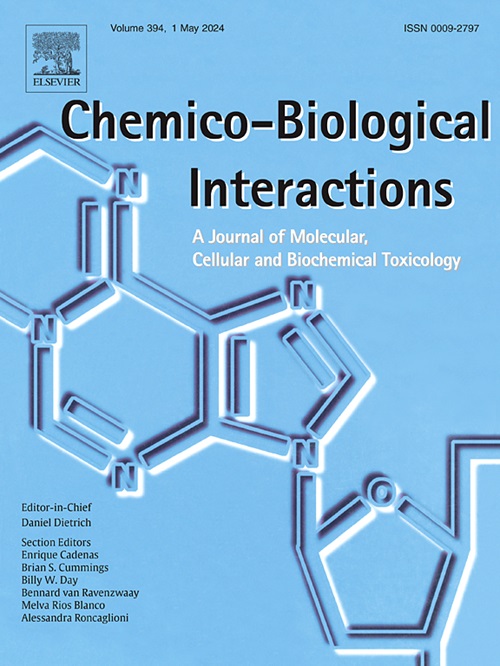顺式环(l - ph - l - pro)与抗菌脯氨酸基2,5-二酮哌嗪联合应用可选择性靶向肿瘤干细胞,显著增强抗乳腺癌活性
IF 4.7
2区 医学
Q1 BIOCHEMISTRY & MOLECULAR BIOLOGY
引用次数: 0
摘要
乳酸菌脯氨酸基环二肽(CDPs)具有立体化学多样性,具有口服生物利用度和药理潜力。在此,我们开发了一个强大的两步离子交换纯化平台,从植物乳杆菌LBP-K10的82 h培养滤液(CFs)中全面分离出16个结构明确的CDPs。利用阳离子(Amberlite IRA-120)和阴离子(Amberlite IRA-67)交换色谱法,我们从82 h的醋酸膜过滤的cf中得到K10-CCDP-IV部分,然后用CH2Cl2萃取得到K10-CCDP-IV- mc。其他试验剂包括LBP-K10-CF (ch2cl2未提取的CF), LBP-K10-MC (ch2cl2提取的CF)和单个顺式环(l - ph - l - pro)。基于lc - ms - hplc的时间过程定量显示,总CDP浓度在82 h达到峰值,F6、F7、F12、F16和F17组分显著增加。对MDA-MB-231乳腺癌细胞的体外研究表明,K10-CCDP-IV-MC和LBP-K10-MC均通过诱导g1期阻滞和线粒体介导的细胞凋亡,显著抑制细胞增殖,表现为细胞铬c、cleaved caspase-3和BAD的表达增加,Bcl-2的表达下调。此外,两种治疗都抑制了癌症干细胞的特征,包括CD133+亚群的减少、Oct4的抑制和球体形成的抑制。在体内,口服LBP-K10-MC可显著减少异种移植SCID小鼠的肿瘤体积,且无全身毒性或不良反应。这些发现强调了基于cdp的联盟作为口服的、生物可利用的、从单一益生菌中提取的多功能抗癌药物的治疗相关性和临床前验证。这支持了它们在饮食和治疗应用中的转化潜力,为生产针对乳腺癌干细胞的功能性CDPs提供了一个可扩展的食品级平台。本文章由计算机程序翻译,如有差异,请以英文原文为准。
The combined application of cis-cyclo(L-Phe-L-Pro) with antimicrobial proline-based 2,5-diketopiperazines significantly enhances anti-breast cancer activity by selectively targeting cancer stem cells
Proline-based cyclic dipeptides (CDPs) from lactic acid bacteria are stereochemically diverse molecules, possessing oral bioavailability and significant pharmacological potential. Herein, we developed a robust two-step ion-exchange purification platform to comprehensively isolate 16 structurally defined CDPs from 82-h culture filtrates (CFs) of Lactobacillus plantarum LBP-K10. Utilizing cation (Amberlite IRA-120) and anion (Amberlite IRA-67) exchange chromatography, we generated the K10-CCDP-IV fraction from 82-h acetate membrane-filtered CFs, followed by CH2Cl2 extraction to obtain K10-CCDP-IV-MC. Additional test agents included LBP-K10-CF (CH2Cl2-unextracted CF), LBP-K10-MC (CH2Cl2-extracted CF), and a single cis-cyclo(L-Phe-L-Pro). LC-MS-linked HPLC-based time-course quantification revealed peaks in total CDP concentration at 82 h, with notable increases in fractions F6, F7, F12, F16, and F17. In vitro studies using MDA-MB-231 breast cancer cells demonstrated that both K10-CCDP-IV-MC and LBP-K10-MC significantly suppressed cell proliferation by inducing G1-phase arrest and mitochondria-mediated apoptosis, as evidenced by the increased expression of cytochrome c, cleaved caspase-3, and BAD, along with the downregulation of Bcl-2. Furthermore, both treatments inhibited cancer stem cell characteristics, including a reduction in the CD133+ subpopulation, repression of Oct4, and inhibition of sphere formation. In vivo, oral administration of LBP-K10-MC in xenograft-bearing SCID mice resulted in a significant reduction in tumor volume without systemic toxicity or adverse effects. These findings underscore the therapeutic relevance and preclinical validation of CDP-based consortia as orally deliverable, bioavailable, and multifunctional anticancer agents derived from a single probiotics. This supports their translational potential in dietary and therapeutic applications, offering a scalable, food-grade platform for the production of functional CDPs targeting breast cancer stemness.
求助全文
通过发布文献求助,成功后即可免费获取论文全文。
去求助
来源期刊
CiteScore
7.70
自引率
3.90%
发文量
410
审稿时长
36 days
期刊介绍:
Chemico-Biological Interactions publishes research reports and review articles that examine the molecular, cellular, and/or biochemical basis of toxicologically relevant outcomes. Special emphasis is placed on toxicological mechanisms associated with interactions between chemicals and biological systems. Outcomes may include all traditional endpoints caused by synthetic or naturally occurring chemicals, both in vivo and in vitro. Endpoints of interest include, but are not limited to carcinogenesis, mutagenesis, respiratory toxicology, neurotoxicology, reproductive and developmental toxicology, and immunotoxicology.

 求助内容:
求助内容: 应助结果提醒方式:
应助结果提醒方式:


